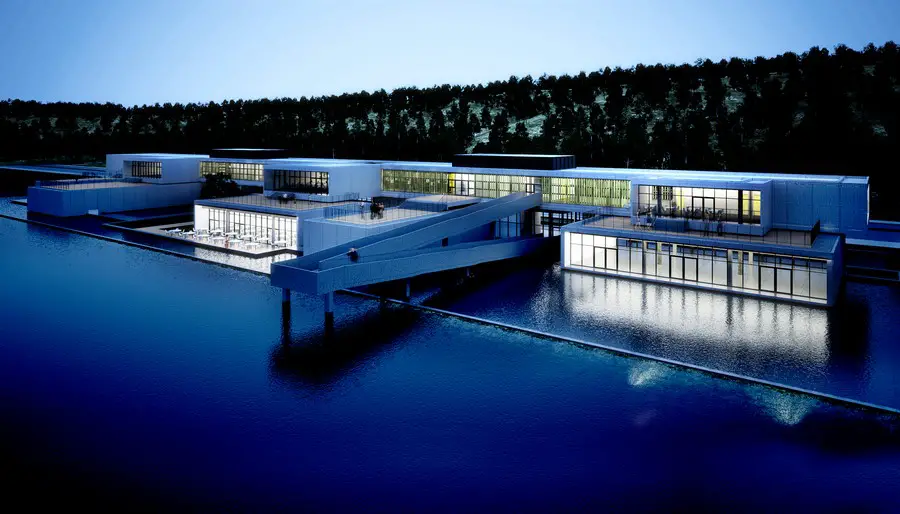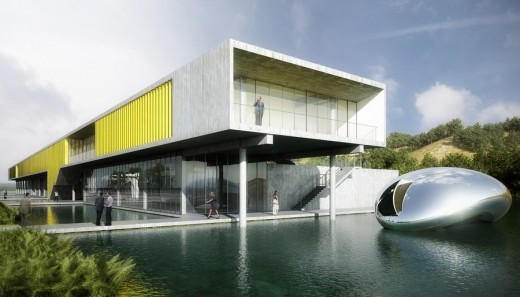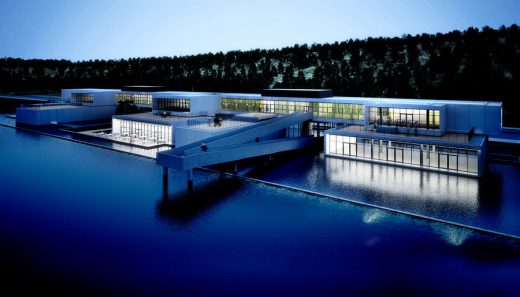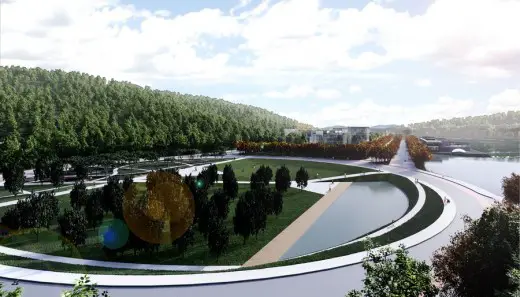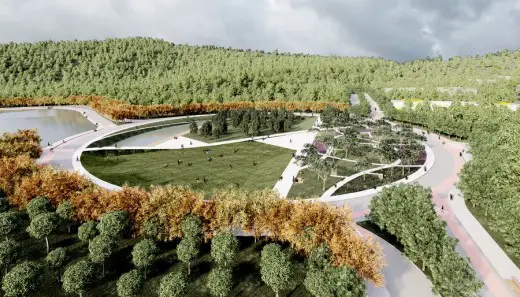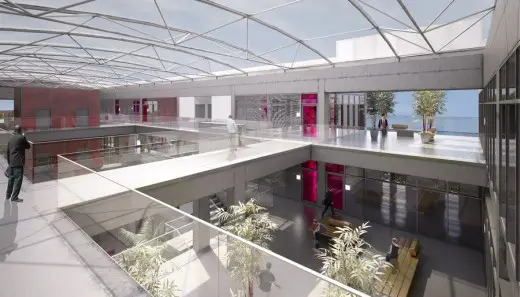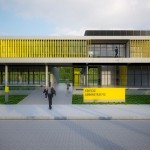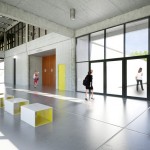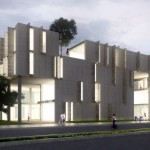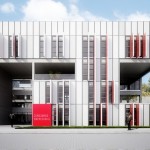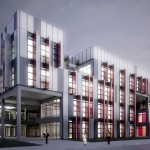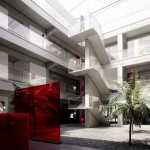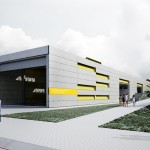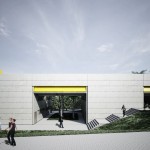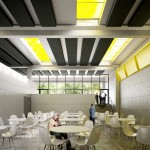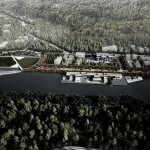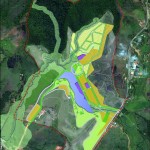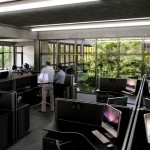Science and Technology Park of Itajubá, Brasil Architecture Design Images
Science and Technology Park of Itajubá
PCTI: New Building in Minas Gerais design by BCMF and Mach architects, Brazil
19 + 12 Jun 2014
Science and Technology Park of Itajubá, Brasil
Location: Itajubá, Minas Gerais state, Brazil
Design: BCMF Arquitetos / MACH Arquitetos
Science and Technology Park of Itajubá
Co-authored by Bruno Campos, Marcelo Fontes, Silvio Todeschi (BCMF Arquitetos) and Mariza Machado Coelho (Mach Arquitetos); Landscape: Vazio S/A; Graphic Design: Hardy Design; Urban Infrastructure: Engesolo ; Renderings: André Resende (BCMF).
Location
The city of Itajubá lies in the southern state of Minas Gerais, Brazil, and has a population of approximately 100,000 inhabitants. The presence of a large number of postgraduate researchers guarantees the city a prestigious position in scientific research in Brazil and worldwide.
The city is also nationally recognized for having one of the best university systems in the country. Furthermore, the city has one of the largest industrial districts in the southern region of the state, with large and medium sized industries, many of which are undergoing expansion, offering new jobs, and employing today almost ten thousand people.
These facts contribute to Itajubá reaching one of the highest human development indices (HDI) in Minas Gerais. Such an environment is propitious to the installation of the Science and Technology Park – an enterprise in which the partnership between the three spheres of government, private companies and the Federal University of Itajubá (UNIFEI) will create an environment conducive to innovation and development, both locally and for the country.
Urban design
Designed with an emphasis on environmental and landscape quality, the park will become a place for public use, a leisure option for the city and its surroundings, stimulating local tourism. The urban and landscape design has been developed as an alternative configuration to conventional urban occupation schemes with respect to the low density and the integration of the built environment with nature which this project intends to prioritize. In summary, the proposal for the area is to have the characteristics of a park, rather than be a mere expansion of the city and this is reflected in the urbanization of only approximately 67hec out of a total area of 250hec.
Topography and site
The main occupied areas in the project arise directly from the map of slopes, in that the areas inclined at more than 25% are preserved. This strategy allows the two vectors occupied by buildings to be surrounded by green areas, which the project aims to preserve. Views to the surrounding landscape are also provided due to the intrinsic configuration of the buildings, which will be the result of parameters designed to control the occupancy rate and utilization coefficient.
A third vector, defined by the future Itajubá City Park, articulates with the two previously mentioned in a permanent preservation area. It is proposed that the spatial articulation of the three vectors is established and reinforced by the creation of a large circular plaza, an essentially public site, a great meeting point with dense forestation and a landscaping, scientific and recreational use of the ‘water’ element.
Given its characteristics, the name of Agora is assigned to this space, as in the public squares of the classical Greek city. Along the flatter footprint, a dam is proposed on the José Pereira stream to create a lake with approximately 10 hectares, an important element in the overall landscape of the park that can also serve as a tool for measurement and control of floods.
Access and infrastructure
The park is accessed from the east by the highway MG -383 and from southwest by Avenida BPS, which follows the path of the José Pereira stream and can lead, without accented gaps, the flow of visitors from the city and the University, encouraging the use of bicycles. The UNIFEI and buildings that comprise Phase I of PCTI are situated on Avenida BPS, and the proximity to the installation site of the PCTI Phase II is a decisive factor for the necessary integration between business and academic environments.
Landscaping
It is intended to provide interaction between the local landscape and urban areas of the park, marked mainly by the new lake. The forestation of streets in the urban planning is thematic, that is, each street corresponding to a particular native tree species.
Perennial species that require less water for irrigation, besides being able to promote sustainable landscaping and maintenance savings, are the most used. The emphasis of the landscape design is given to the Agora, which functions as an articulator of the park and will have spaces for events, leisure and contemplation. Furthermore, the inclusion of several devices that enhance the well being of users (benches, tables, vases, lighting) qualifies the sidewalks and the Agora.
Buildings
Three new buildings were designed in addition to the urban design: the Administrative Building, the Startup Incubators Center, and the Maintenance Center. Some common characteristics to all three buildings are the option for industrialized building systems (particularly in modular precast concrete), the use and control of natural ventilation and lighting, and the prismatic volumes where large openings establish the continuity between architectural spaces and landscape.
The sectorization of uses in the Administrative Building is established in two main levels, prioritizing public activities on the ground floor, in and within isolated volumes. The administrative spaces are hold by a long linear block over ‘pilotis’. Thus, the human scale is ensured in different ambiences on the access level, while a strong image of the institution is stressed by the administrative suspended block.
The Startup Incubators Center is defined by the multitude of activities performed by the participating companies. The architectural design responds to it with a dynamic composition of volumes. The adoption of an organic principle of occupation over a spatial grid meets modular adaptability demanded by a venture like this.
The Maintenance Center holds the technical activities while gathering spaces dedicated to wellness and socialization of PCTI employees. The building consists of three blocks separated by two inner courtyards. Yet a clear autonomy is established for each segment, the building is characterized as a single volume with large openings at the ends and along the courtyards.
BCMF Arquitetos + MACh Arquitetos
Science and Technology Park of Itajubá – Building Information
PROJECT NAME: Science and Technology Park of Itajubá (PCTI)
LOCATION: Itajubá, Minas Gerais, Brazil
CLIENT: Federal University of Itajubá (UNIFEI)
ARCHITECTS: Bruno Campos, Marcelo Fontes, Silvio Todeschi (BCMF Architects), Fernando Maculan, Mariza Machado Coelho (Mach Architects)
TEAM: Mara Coelho, Patricia Bueno, André Resende, Anna Lobato, Gabriela Gomes, Leonardo Rodrigues, Marta Guedán Carolina Eboli, Luisy Silva, Henrique Amin
RENDERINGS: BCMF Arquitetos (André Resende)
COORDINATION AND URBAN INFRASTRUCTURE: Engesolo
ACOUSTICS: Oppus
AR CONDITIONING: Air Project
WAYFINDING / GRAPHIC DESIGN: Hardy Design
CONCRETE STRUCTURE: Engeserj
STEEL STRUCTURE: Jansen Domingues
WATERPROOFING: Firmino Siqueira / Isolate
ELECTRICAL, AUTOMATION AND SONORIZATION: Engeth
LANDSCAPE: Vazio S/A
HYDRAULICS AND FIREPROOF INSTALATIONS: MM Projects
MASTERPLAN AREA: 666,216 m2
ADMINISTRATIVE BUILDING: 6,455 m2
BUSINESS INCUBATOR: 5,378 m2
SUPPORT CENTER: 1,896 m2
DATE OF PROJECT: 2012
DATE OF CONSTRUCTION: not yet initiated
Science and Technology Park of Itajubá images / information from BCMF Architects
Location: Itajubá, Minas Gerais, Brazil
Architecture in Brasil
Itaipava Arena Pernambuco : 2014 World Cup Venue, São Lourenço da Mata, Brazil
Design: Fernandes/Arquitetos Associados
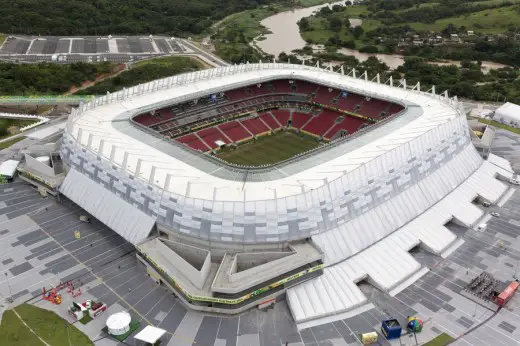
image from architects
Arena Pernambuco
Amazon Sports Complex, Manaus, east Brazil
Design: gmp – von Gerkan, Marg & Partners
Amazon Sports Complex Brazil
Symbolic Brazil World Cup Structure Competition
A Mata Atlântica Forest, São Paulo
Design: Balmori Associates
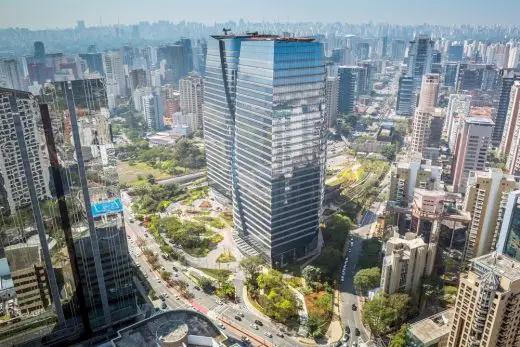
image courtesy of Eduardo Lazzarini
A Mata Atlântica Forest in São Paulo
Website: Prefeitura Municipal de Itajubá
Comments / photos for the cience and Technology Park of Itajubá page welcome

